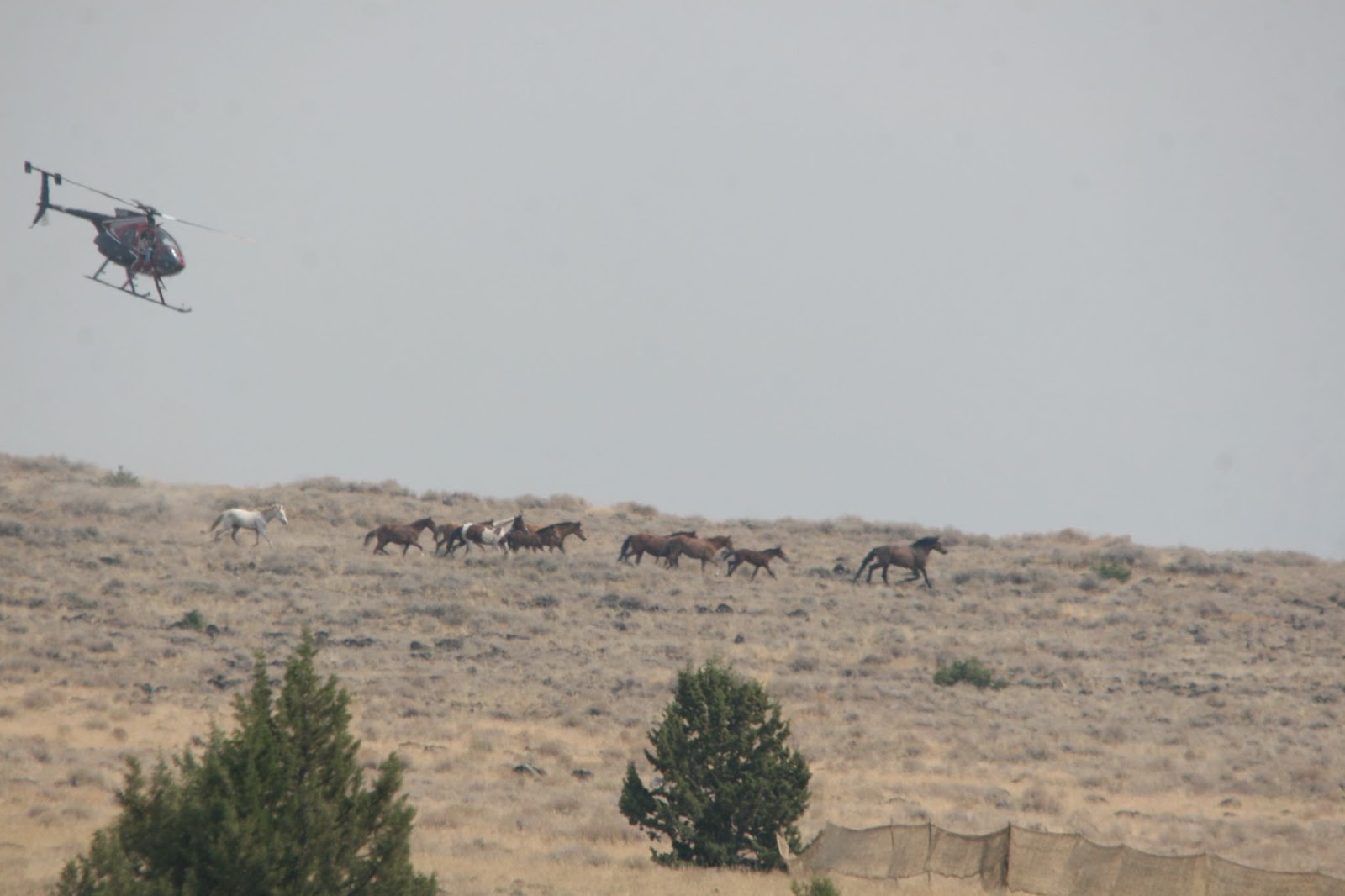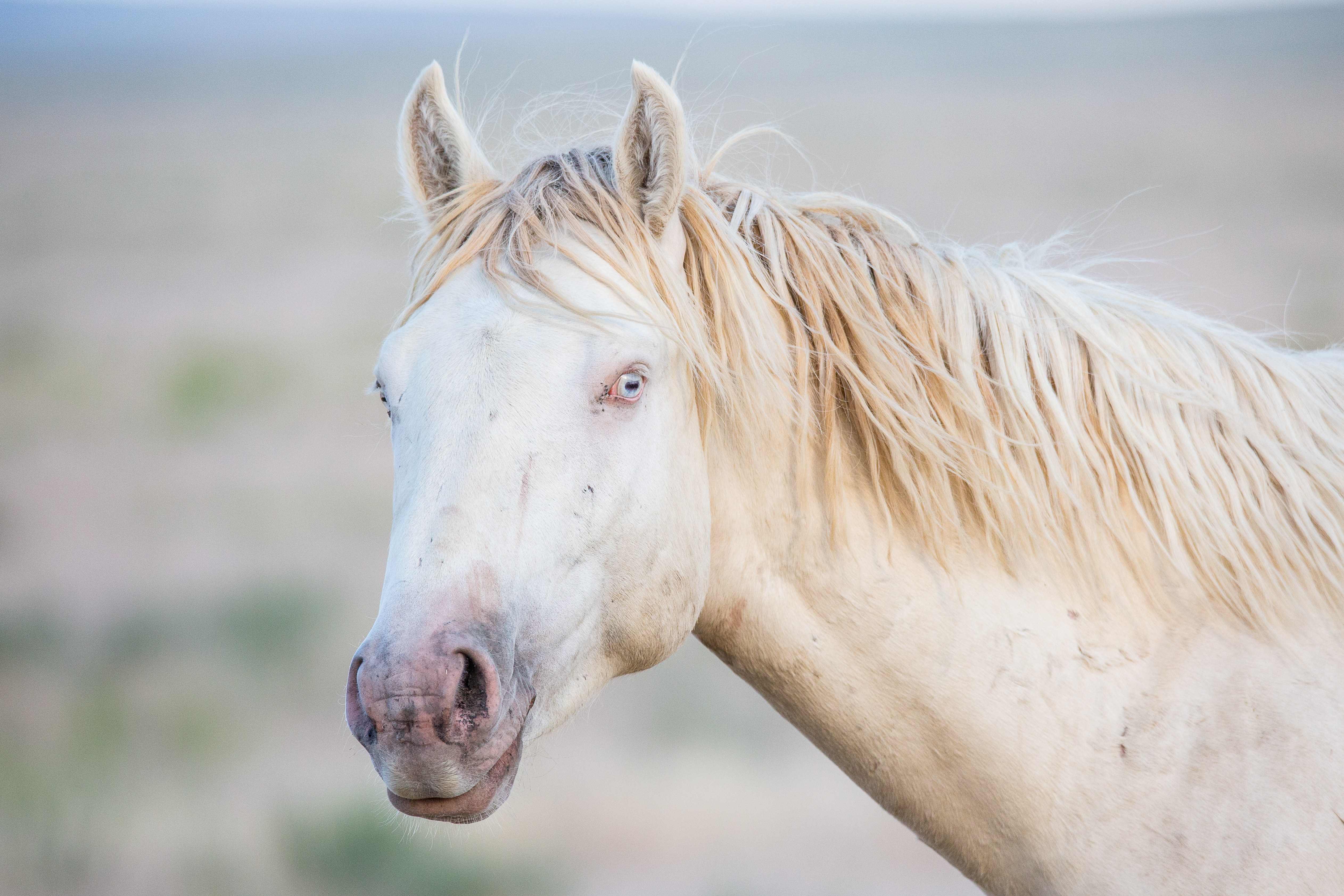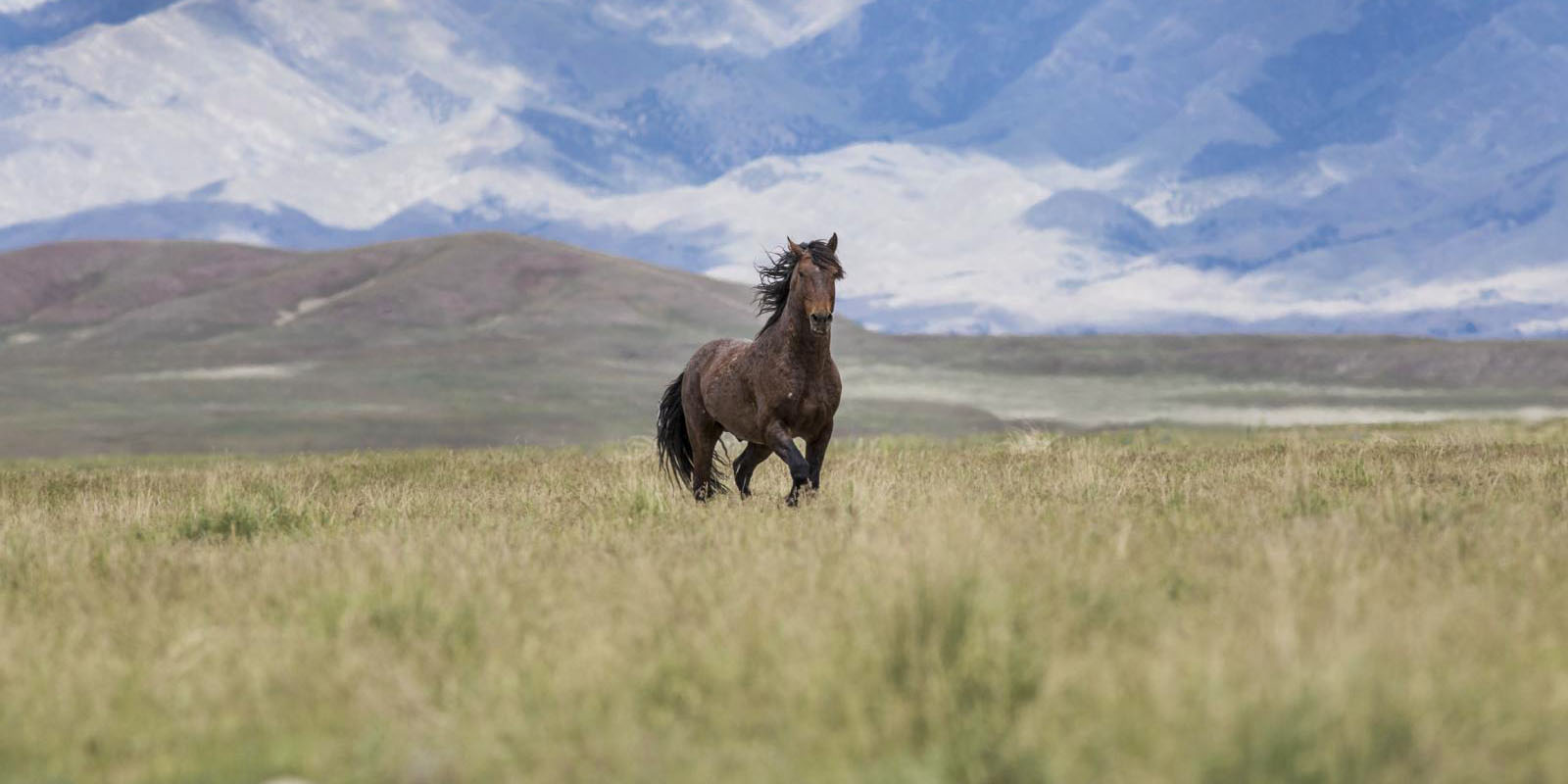(September 25, 2023) There’s a lot to be discovered in Oregon. While the state is known for its hauntingly beautiful Pacific Northwest fog, its vast forests, rugged and wild coastline, and boundless outdoor adventures, many don’t know about the wild horses who roam the high desert. These incredible animals paint the landscape with beautiful roans, pintos, palominos, and cremellos. Like other wild horse herds in the West, they encounter common challenges such as Bureau of Land Management (BLM) roundups, inequitable resource distribution, and competition. However, they also confront distinctive circumstances.

Oregon wild horses live on three million acres spread across over 18 Herd Management Areas (HMAs). To date, there are fewer than 3,000 wild horses and burros on these lands, thanks to the BLM, which has rounded up 17,000 animals since 1971. The majority of HMAs in Oregon are notoriously mountainous and hard to access, which means reaching the herds and documenting them is an ongoing challenge. This terrain presents an additional hardship, too: water. Facing drought and fire, the wild horses in Oregon have been subject to “emergency roundups,” where the BLM pulls hundreds or thousands of horses off the land claiming there is water and forage scarcity.
The 2023 roundups just concluded, resulting in nearly 300 fewer wild horses in Oregon. Here’s what you need to know about the state of wild horses in Oregon.
Last three years
During the Paisley Desert Emergency Wild Horse Gather in 2020, more than 700 horses were rounded up. In addition, over 200 horses were also rounded up from other HMAs that same year. The Barren Valley Complex Emergency Wild Horse Gather took place in 2021, resulting in the removal of nearly 1,700 horses. Unfortunately, 27 horses lost their lives during this process. The Palomino Butte Emergency Wild Horse Gather in 2021 also led to the rounding up of over 200 horses. In total, more than 2,000 horses were pulled from Oregon's public lands in that year alone. In 2022, there was only one roundup in the South Steens HMA, which resulted in the herd's population being halved. During this roundup, over 700 horses were captured, and sadly, 22 horses died.
2023 roundups
In August of this year, there were roundups in three different HMAs in southeast Oregon, which is known as a popular area for wild horse viewing and roundups. These roundups took place near Burns, Oregon, and the Burns BLM wild horse and burro facility. The populations in these areas were already experiencing a decline in numbers, and the roundups further reduced their size.
The Palomino Butte HMA, located just 15 miles from Burns, is home to a small herd of 254 horses. From August 14 to 16, helicopters were used to chase the horses in hot weather conditions, with temperatures sometimes reaching close to 100 degrees. A total of 192 horses were gathered during this time, leaving only 62 horses remaining on the range.
Next on the list was the Stinking Water HMA, which is located 30 miles from Burns. In another three-day roundup, 63 out of the herd of 103 horses were removed.
Lastly, the Hog Creek HMA, which is located 8 miles from Harper, Oregon, was targeted for a one-day roundup. The BLM's goal was to gather the entire herd of 66 horses and release 30 back into the wild. However, only 38 horses were gathered, and 14 were returned to the range. This leaves the current population estimated at 42 horses.
These roundups have had a significant impact on the wild horse populations in these areas, further reducing their numbers.
The plight of cremellos
Oregon mustangs are known for their beauty. Pintos, roans, palominos, and cremellos are common occurrences in these herds—making them highly coveted and beloved horses.

However, wild horse advocates worry about the plight of cremello horses after capture. Just last year during the South Steens roundup, 11 of the 22 animals euthanized were cremellos.
There is a misconception in cowboy culture that cremellos or blue-eyed horses are more prone to eye disorders and cancers due to their light pigmentation and blue eyes. However, this is simply a myth and not supported by factual evidence. The recent deaths at the South Steens have caused concern among wild horse advocates, as there is worry that these horses may be euthanized solely based on their coloring. It is important to note that these incidents are part of a larger pattern where the BLM euthanizes captured horses and burros for non-life-threatening conditions, possibly as a means to promote the idea of euthanizing unadoptable horses.
AWHC in Oregon
Oregon has been at the center of controversial experiments involving sterilization of wild equines. The experiments included techniques such as ovariectomy via colpotomy, tubal ligation, and hysteroscopically guided laser ablation of the oviduct papilla. The Bureau of Land Management (BLM) proposed these experiments in 2016 and again in 2018, but they were halted due to legal actions taken by organizations including the American Wild Horse Campaign (AWHC). In 2019, the BLM attempted to pursue ovariectomies via colpotomy in Utah, but the plans were dropped under the new Biden Administration. AWHC has been actively working to protect wild horses and burros from inhumane practices, including helicopter roundups that threaten the genetic viability of these herds.
Oregon’s wild horses have been the subject of inhumane helicopter roundups year after year, significantly slashing these beloved wild herds and placing them at risk of no longer being genetically viable. This treatment is unacceptable. Join AWHC in fighting back for Oregon’s wild mustangs by joining our ever-growing grassroots army.


